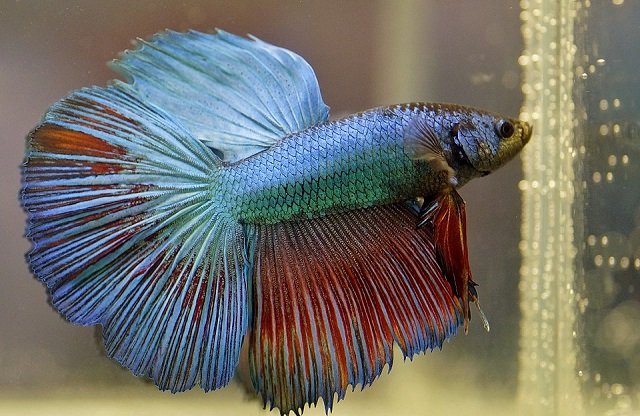
Stocking density is one of the most critical factors in modern aquaculture. For rainbow trout (Oncorhynchus mykiss), a fundamental species for the sector’s global expansion, finding the perfect balance between maximizing production and maintaining fish welfare is a constant challenge.
While producers know that overcrowding can reduce growth, the exact biological mechanisms behind this phenomenon are complex. It is not just about competition for space or food. A new study published in the journal Aquaculture by scientists from the Ocean University of China examines how different stocking densities physiologically affect trout, revealing a direct link between chronic stress, glucose metabolism, and growth inhibition.
Key findings
- High stocking density (HD) significantly elevates serum cortisol and glucose levels, indicating chronic stress in trout.
- Growth performance, specifically weight gain (WG) and specific growth rate (SGR), is negatively correlated with cortisol and glucose levels.
- High density reprograms hepatic metabolism: it activates gluconeogenesis (glucose production) genes such as pc and fbpla, while suppressing glycolysis (glucose use) genes like hk4 and gapdh1.
- High-density stress inhibits molecular growth pathways, such as the cell cycle (reducing genes like ccnb1/2 and cdk1) and the synthesis and action of growth hormone.
- The study estimated an optimal density for the experimental conditions to be between 28.36 and 36.63 kg/m³, offering a balance between production and welfare.
The experiment design: measuring the impact of density
To understand this relationship, a team of researchers conducted an 84-day experiment. A total of 936 rainbow trout were distributed into three treatment groups with different initial stocking densities:
- Low Density (LD): 9.15 kg/m³
- Moderate Density (MD): 13.65 kg/m³
- High Density (HD): 27.31 kg/m³
During the trial, blood samples were taken at 28, 56, and 84 days to measure key stress indicators, such as serum cortisol and glucose. At the conclusion, growth performance was evaluated, and a transcriptomic analysis of the liver (the main metabolic organ) was used to identify which genes and molecular pathways were affected by the different densities.
Higher density, more stress, and less growth
The findings confirmed the researchers’ hypothesis: high stocking density induces a chronic state of stress that directly impairs fish performance.
The physiological footprint of stress
The blood analyses were clear: cortisol and glucose levels increased progressively with the increase in stocking density. Trout in the high-density (HD) group showed significantly higher cortisol levels than those in the low and moderate-density groups.
Cortisol is the primary stress hormone in fish. Its chronic elevation triggers a cascade of responses, including the stimulation of gluconeogenesis (new glucose production) and glycogenolysis (release of stored glucose). This explains why blood glucose levels were also significantly higher in the HD group, a state known as hyperglycemia.
The impact on growth and efficiency
This physiological state of stress had a direct cost on productive performance. The study found a strong negative correlation between stress indicators (cortisol and glucose) and growth parameters.
Stay Always Informed
Join our communities to instantly receive the most important news, reports, and analysis from the aquaculture industry.
- Reduced growth: As serum cortisol and glucose increased, weight gain (WG) and specific growth rate (SGR) decreased significantly.
- Poorer efficiency: Conversely, the feed conversion ratio (FCR) showed a positive correlation with cortisol and glucose levels. This suggests that stressed fish use feed less efficiently, diverting energy that should be allocated to growth to manage the stress response instead.
Based on the quadratic regression analysis of growth, the study determined that, for the conditions of this system, the optimal stocking density was in the range of 28.36 to 36.63 kg/m³. Beyond this point, the negative effects of stress began to outweigh the benefits of higher biomass.
The “Black Box”: What genetic analysis of the liver reveals
The study’s most revealing finding came from the transcriptomic analysis of the liver, which allowed researchers to see exactly how stress reprogrammed the fish’s biology at a molecular level.
When comparing the high-density (HD) and low-density (LD) groups, 1,312 differentially expressed genes were identified, indicating a massive metabolic and physiological reprogramming.
A brake on growth: The cell cycle halts
High-density stress directly affected the molecular pathways responsible for growth. The genetic analysis showed that in the HD group, fundamental genes for the cell cycle, such as ccnb1, ccnb2, and cdk1, were inhibited (downregulated). In simple terms, the fish’s body received the order to stop producing new cells, thereby halting growth.
This growth inhibition was also linked to the alteration of key hormonal pathways, such as the synthesis, secretion, and action of growth hormone, and the activation of stress-related signaling pathways, like FoxO and AMPK.
Glucose reprogramming: More production, less use
The hepatic analysis unveiled the central mechanism of the metabolic problem: under chronic stress, the trout enters a paradoxical state. Despite having high blood glucose levels (hyperglycemia), its body does not use it efficiently for energy or growth.
This is due to genetic reprogramming:
- Increased Gluconeogenesis (Production): Cortisol-induced stress activated the genes that create new glucose. Specifically, the pc (pyruvate carboxylase) and fbpla (fructose-1,6-bisphosphatase) genes were upregulated. The liver was actively producing glucose to respond to the cortisol alarm signal.
- Decreased Glycolysis (Use): Simultaneously, the body suppressed the genes needed to break down and use that glucose for fuel. Key glycolysis genes, such as hk4 (hexokinase-4) and gapdh1 (glyceraldehyde-3-phosphate dehydrogenase), were downregulated.
- Suppressed Storage (Glycogenesis): The study also found that the pathways for storing excess glucose as glycogen (the body’s energy reserve) were inhibited.
The result is a fish trapped in a detrimental metabolic cycle: it is chronically stressed (high cortisol), forcing it to produce more and more glucose (hyperglycemia), yet it is unable to use or store it effectively. All the organism’s energy is diverted from growth processes to manage this metabolic crisis.
Implications for sustainable aquaculture
This study provides a comprehensive overview of why high stocking density is detrimental. It demonstrates that overcrowding is not just a problem of physical space but a physiological stressor that triggers profound metabolic and genetic reprogramming.
For the rainbow trout producer, these findings reinforce the critical need to optimize stocking densities. Exceeding optimal thresholds, while tempting for increasing biomass, generates chronically stressed fish that not only grow less and convert feed more poorly but also suffer from severe metabolic dysregulation.
The research underscores that density management is a fundamental tool for mitigating stress, improving animal welfare, and, ultimately, ensuring the efficiency and sustainability of trout production. Furthermore, some scientific studies have shown that induced swimming and the use of essential oils help manage stress in rainbow trout farming.
Reference
Li, Z., Feng, Z., Luo, S., Wang, Y., Xu, Y., Dong, K., Hou, Z., Gao, Q., & Dong, S. (2025). Effects of stocking density on growth and glucose metabolism in rainbow trout (Oncorhynchus mykiss). Aquaculture, 743413. https://doi.org/10.1016/j.aquaculture.2025.743413
Editor at the digital magazine AquaHoy. He holds a degree in Aquaculture Biology from the National University of Santa (UNS) and a Master’s degree in Science and Innovation Management from the Polytechnic University of Valencia, with postgraduate diplomas in Business Innovation and Innovation Management. He possesses extensive experience in the aquaculture and fisheries sector, having led the Fisheries Innovation Unit of the National Program for Innovation in Fisheries and Aquaculture (PNIPA). He has served as a senior consultant in technology watch, an innovation project formulator and advisor, and a lecturer at UNS. He is a member of the Peruvian College of Biologists and was recognized by the World Aquaculture Society (WAS) in 2016 for his contribution to aquaculture.




